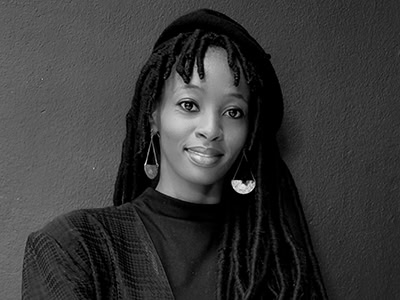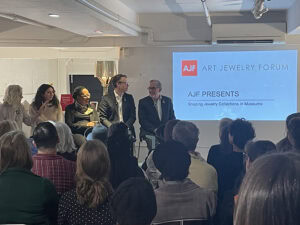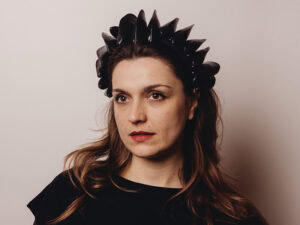There’s a quiet power in the work of Geraldine Fenn—one that doesn’t clamor for attention but draws you in with its layered storytelling and striking beauty. Fenn’s jewelry challenges colonial histories while inviting intimate reflection, offering pieces that are as thought-provoking as they are wearable. With her recent win of the AJF Solo Exhibition Award, she reaches a milestone nearly 30 years in the making—a moment of recognition not only for her own practice, but for the broader field of South African art jewelry that she has long championed.
In this conversation, Fenn speaks with warmth and insight about Colonial Comeuppance, the series that earned her the award. We explore her evolving relationship with museums, her fascination with historical portraiture, and the new collaborations and techniques—such as micromosaic and beadwork—that are pushing her practice in exciting directions. What unfolds is a portrait of an artist deeply committed to craft, connection, and the quiet but powerful role jewelry can play in reframing the stories we carry and wear.

Khanya Mthethwa: Congratulations on winning the AJF Solo Exhibition Award! What does this recognition mean to you, both personally and professionally?
Geraldine Fenn: Thank you! It means so much to me, especially at this stage of my career. I’ve been trying for a long time—nearly 30 years!—to find a bigger audience for my work, as well as that of other South African jewelry artists, so this means everything to me. The opportunity to focus on producing a body of work is one that I don’t take for granted, and my heartfelt thanks go to Linda Peshkin and AJF for their generosity.
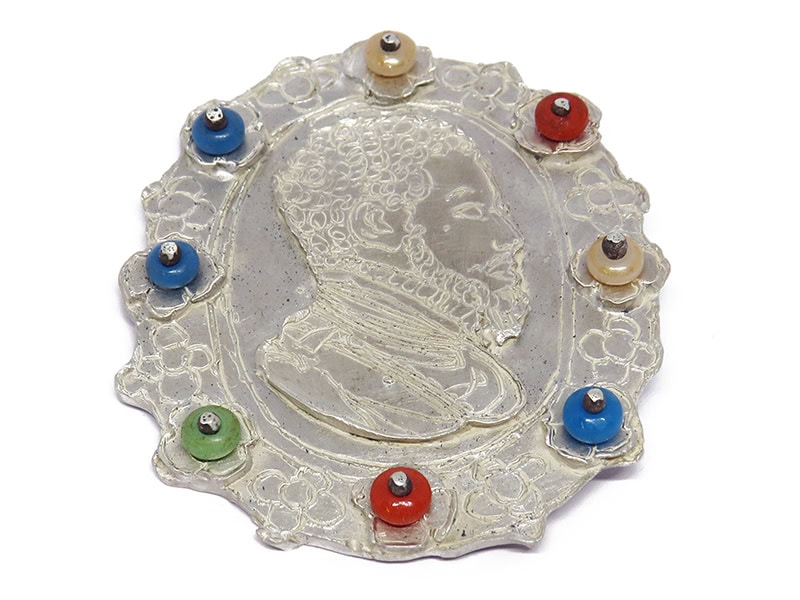
Your upcoming exhibition will explore power dynamics in European colonization through jewelry. How did this concept emerge in your practice, and what drew you to historical portrait jewelry as a medium for storytelling?
Geraldine Fenn: It’s hard to pinpoint exactly when it emerged in my work, but it’s been something I’ve been thinking about for a long time. I studied archaeology before moving into jewelry, so the ability of cultural artefacts to “speak” about the people and societies that produced them has always interested me, and museums have been happy places of inspiration for me. More recently, though, I’ve felt increasingly uncomfortable when looking at cabinets of curiosity: as an African of European descent, I’m aware that looking at these artefacts is not neutral, and the wonder that collections were meant to inspire is tinged with sadness about the circumstances in which they came to be.
These thoughts started appearing in my work about three years ago, when I began using miniature portraits as a medium to provoke some questions about the colonial presence in Africa. By turning the colonials themselves—the characters in the portraits—into objects being collected and exoticized, pinned down like butterflies under glass, I’m aiming to turn the tables on them a little bit.
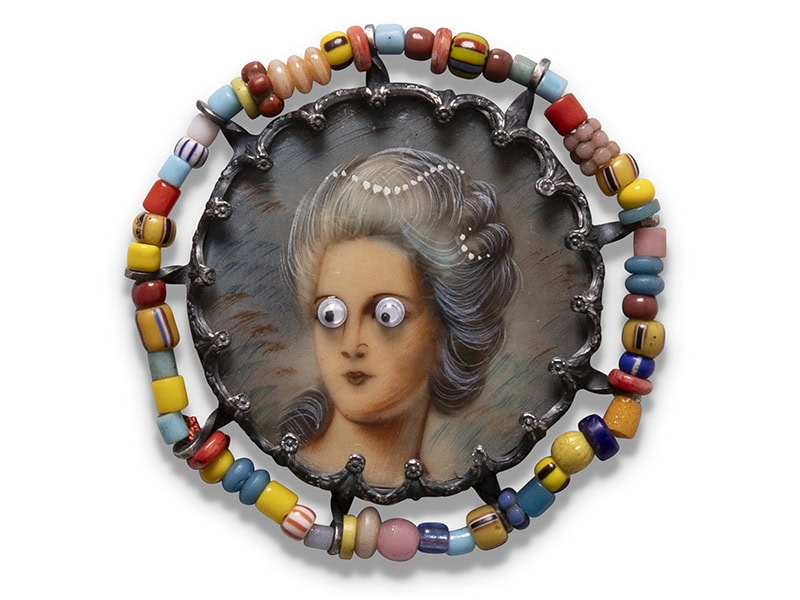
Your work often reinterprets historical forms using contemporary materials such as silver, trade beads, and printed tin. How do you go about selecting the materials and techniques that best convey your narratives?
Geraldine Fenn: I look for things that embody a narrative, or the potential for narrative, as a starting point. The portraits are perfect because the characters are there already, and trade beads have such a history of exchange between Europe and Africa that they are an ideal material for me to use. I’ve always been drawn to collecting things, and there have been a wide range of materials present in my work from the beginning. Sometimes an object itself will suggest a piece I want to make, and other times I have the idea first and then look for the materials best able to express it.
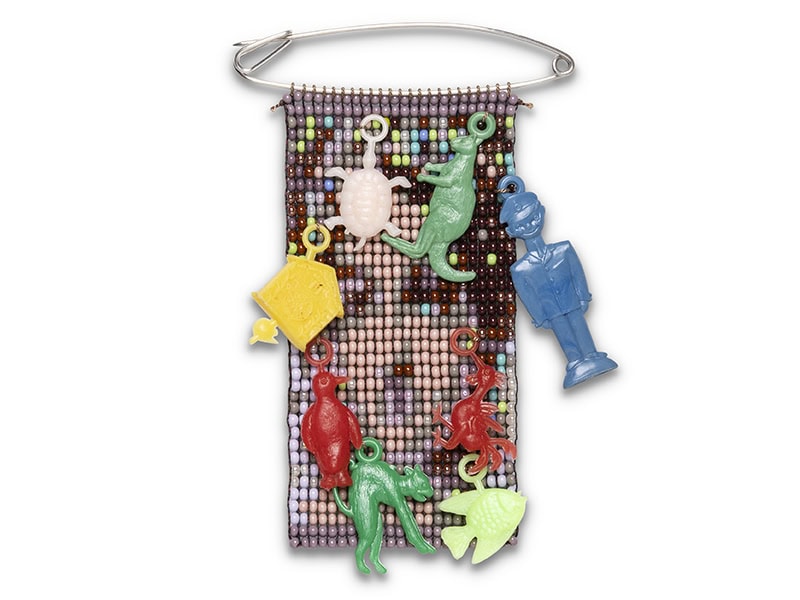
You’ll be collaborating with the Marigold beading collective, as well as incorporating micromosaic for the first time. Tell us about these creative processes and what excites you about exploring these new directions.
Geraldine Fenn: These things came about because I was looking to expand the ways in which I can create portraits to use in my jewelry (since I can’t draw or paint very well). I’ve wanted to collaborate with Marigold for a while now, and pixelating the old painted portraits I’ve been using was the perfect start to that process. It has been facilitated by Joni Brenner, and I’ll be going to Bulawayo with her to meet with the beaders and develop some more ideas. I want to see how far we can push both the loomed beading technique and the subject matter of the faces.
Learning micromosaic—I’m going to be going to Milan in September to do a course with Rebecca di Filippo—is an extension of that desire to create portraits in other media. I’ve always loved glass, so that seemed like a natural fit for me.
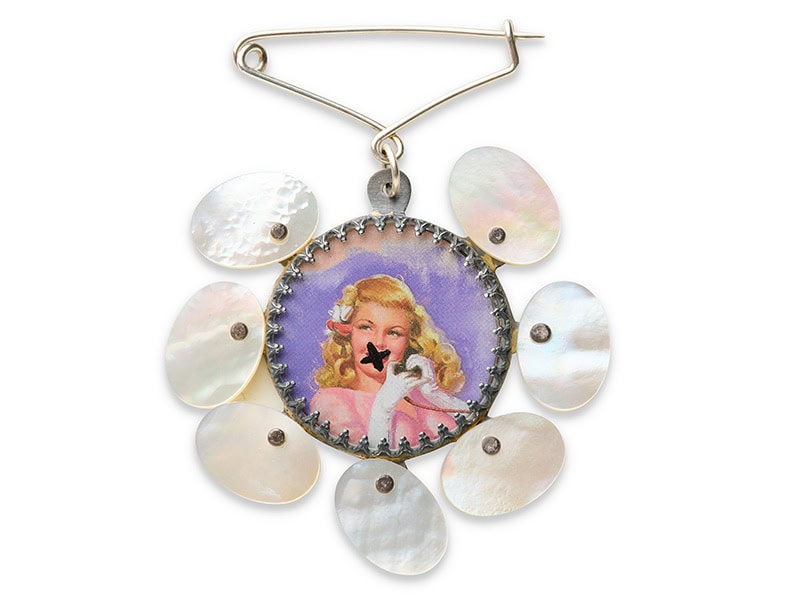
Your gallery, Tinsel, has been an important space for contemporary jewelry in South Africa since 2006. How has running a gallery influenced your artistic practice and contributed to shaping the local jewelry landscape?
Geraldine Fenn: Having the gallery has always been a bit selfishly motivated—nothing like it existed before, so we needed to create a space to show and sell our own work—but I’m proud of the exposure we’ve been able to create for other local artists, too. The last few years have been especially productive for that: We first went to exhibit at Munich Jewellery Week in 2022, and the relationships we initiated then have led to other international exhibiting opportunities both for us (me and my partner Eric Loubser) and for other South African art jewelers who we represent. I think we’ve contributed to local work being put more on the art jewelry map for an international audience, and I’m really happy about that since it has always been our main goal.
In terms of my artistic practice, the gallery has been hugely valuable. Without the impetus it gives us to keep making art jewelry, we might have been fully consumed by the more commercial work we do to earn a living. I also like the fact that our workspace is integrated into the gallery, and we show a wide range of pieces—art pieces side by side with more conventional jewelry—which is good for exposing people to this kind of work and maybe making them feel more comfortable about wearing it.
Your work moves between conceptual art jewelry and bespoke sentimental pieces. How do these two approaches influence each other in your creative process?
Geraldine Fenn: I feel very fortunate that I get to make all kinds of jewelry, because I really love it all! The sentimentality of jewelry, the intimacy it has with its wearer, gives it a built-in sense of narrative, which is what I like to access in my art pieces. So the two really feed into one another—a bespoke piece will have more parameters and be more simple in terms of materials and scale, but the fundamentals are pretty much the same.
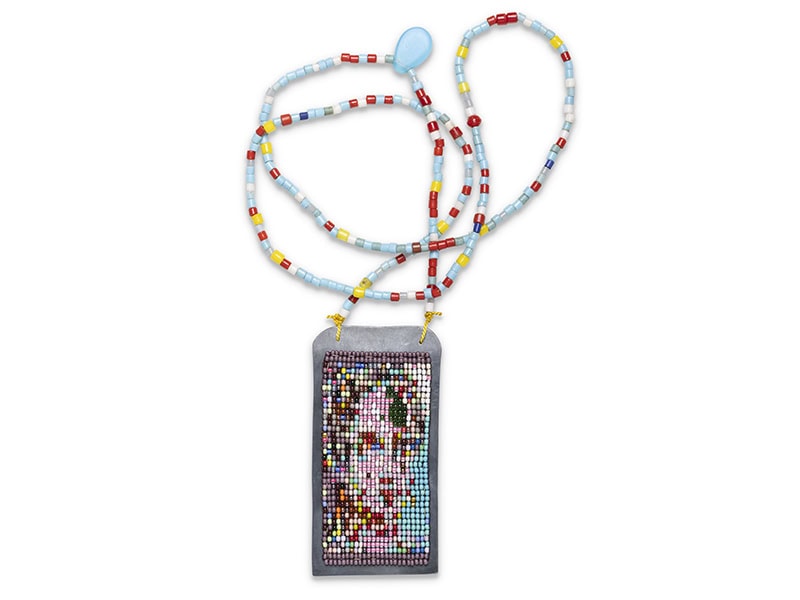
Having exhibited internationally—in Sweden, Brazil, Portugal, and France—how do you see South African contemporary jewelry positioned within the global scene?
Geraldine Fenn: When we’re in Germany, I like to wear my “Africa Your Time Is Now” sweatshirt, mainly to keep warm but also to express the sentiment, which I believe in strongly. We have some momentum now on our side—just look at how well African visual and performing artists are doing on the global stage—so I’d be very happy to see our younger jewelry artists taking advantage of that and creating opportunities for their work to be seen.
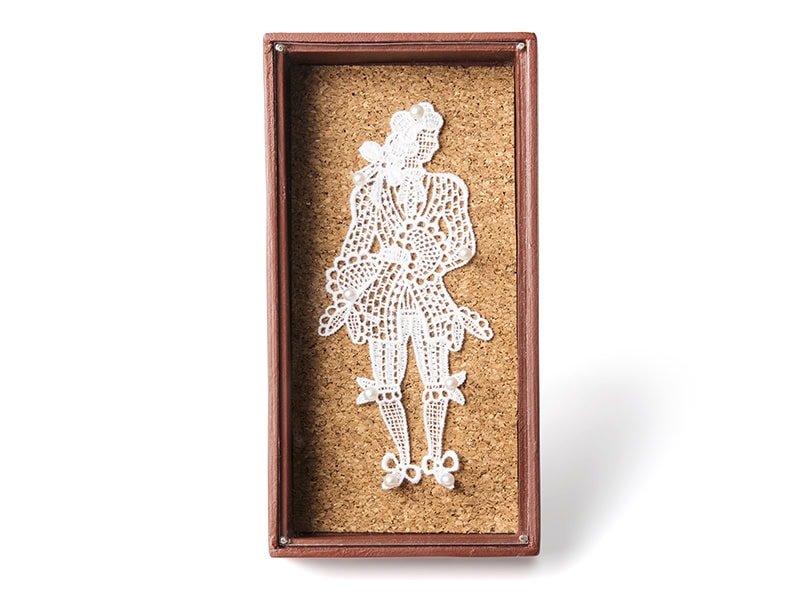
Your award-winning series, Colonial Comeuppance, carries a strong political and historical message. How do you navigate the intersection of jewelry, art, and activism in your work?
Geraldine Fenn: I’ve never thought of my work in terms of activism—my goal is always first and foremost to make something beautiful that also has substance—but this series does have broader relevance, especially in the context of the current storm around the restitution of stolen cultural artefacts by European museums. Jewelry does have great potential for spreading ideas because it’s such a mobile form of art, and yet it inhabits such a personal sphere so it can be a quiet but powerful act of resistance. Ultimately, for me that intersection of art, jewelry, and activism is all about connection. Because it’s wearable, jewelry facilitates contact between people. If a conversation between two strangers takes place because one of them is wearing a brooch of mine, then I’m pleased that I’ve made some kind of contribution.
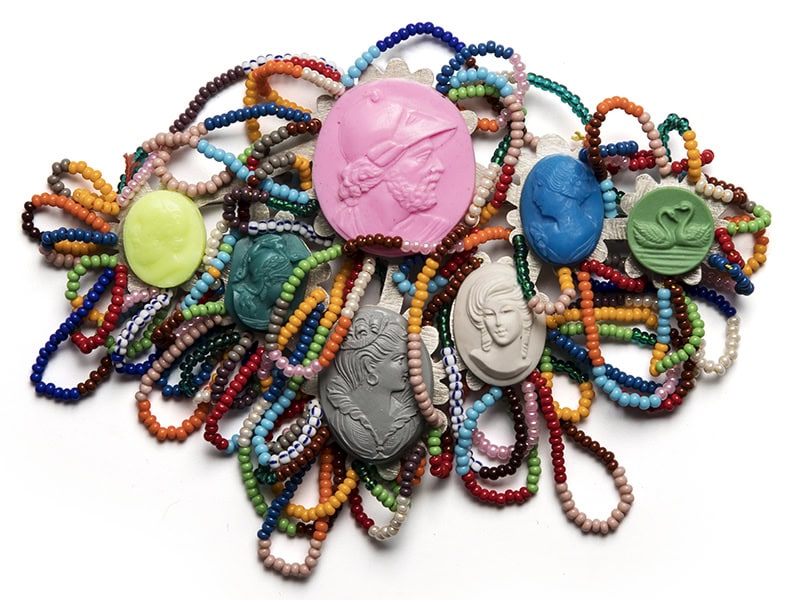
You’ve mentioned feeling somewhat isolated in Johannesburg from the broader art jewelry world. What do you hope this award and the resulting exhibition in North America will offer you in terms of artistic growth and international engagement?
Geraldine Fenn: Already I feel the artistic growth happening! Since the award was announced, my brain has been fizzing with ideas and possibilities that the grant will make possible. It really is a huge opportunity, and I’m extremely thankful for it. I think the international engagement will be great, and it will be a new audience for me, since I haven’t exhibited in North America before. I asked Noel Guyomarc’h if he would host me at his Montreal gallery because it’s a space that is unfamiliar to me and will open up new connections with people. (Canada also has a colonial history, so that fits conceptually, too.) We have set a date for the show, by the way. It will start June 13, 2026.
What’s next for you beyond this exhibition?
Geraldine Fenn: Who knows?! Right now I’m fully focused on planning work for the show, which is a continuation of the themes of colonialism and collecting explored through the medium of portraiture, but you never know where the process might take you, and what might spark a new direction. I guess that’s what keeps us making art, even when it gets hard and it feels like no one’s listening.
We welcome your comments on our publishing, and will publish letters that engage with our articles in a thoughtful and polite manner. Please submit letters to the editor electronically; do so here. The page on which we publish Letters to the Editor is here.
© 2025 Art Jewelry Forum. All rights reserved. Content may not be reproduced in whole or in part without permission. For reprint permission, contact info (at) artjewelryforum (dot) org
